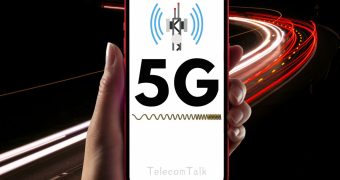
The Federal Aviation Administration (FAA) of the United States is requesting that the Federal Communications Commission (FCC) order relatively small Communication Service Providers (CSPs) to adhere to the exact limitations that Verizon and AT&T voluntarily accepted earlier this year when it comes to rollout of 5G C-band services. According to Reuters, the request was made in a letter between the two organisations dated October 21 on Friday. Pilots received 5G-related aviation advisories from the FAA in January, noting that C-band operations may interfere with various onboard aviation devices. Altimeters, automated landing, heads-up displays/enhanced flight vision systems, and the usage of helicopter autopilot hover modes were all cautioned against in the Notices to Airmen (NOTAMs), which were issued to pilots.
Though AT&T and Verizon Have Already Joined, the FAA Is Concerned About Smaller Carriers
The FAA expressed concern about the potential for out-of-band interference with altimeter systems, which are essential for determining how far an aircraft is above the ground at low altitudes and are especially important when visibility is poor. However, these systems were not created to handle a changing RF environment or terrestrial 5G operations. Within a few days, the organisation authorised around 45% of the American commercial fleet to land in low visibility at several airports.
Verizon, AT&T, and federal authorities declared in June that they would reach a settlement. Verizon EVP Craig Silliman characterised the action as a step forward that will allow Verizon to utilise all of their C-band spectrum for 5G around airports on an expedited and planned schedule.
By the end of 2022, operators of regional aircraft with radio altimeters that are particularly susceptible to interference must upgrade their aircraft with radio frequency filters in accordance with the stepwise method. The agency stated that this work has already started and will move very quickly. In the meantime, it claims to have consulted with AT&T and Verizon to determine which airports they may use their C-band spectrum at without endangering flight schedules. By July 2023, when air carriers must have finished avionics retrofits to reduce potential 5G C-band spectrum disruption, the businesses agreed to postpone 5G C-band deployments near airports. In accordance with the FAA letter, AT&T and Verizon agreed to the 5G mitigation zones surrounding airports fully voluntarily.















